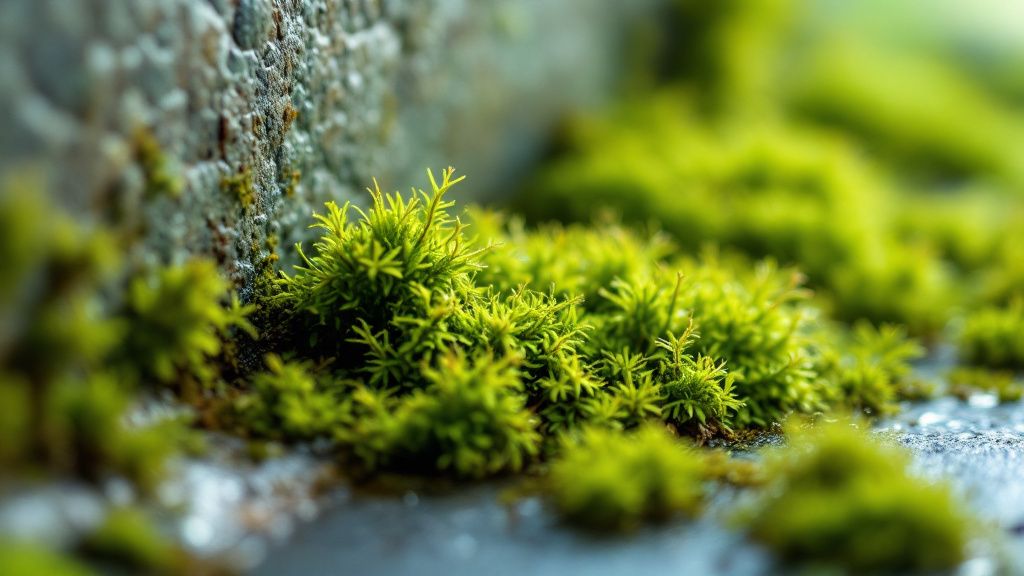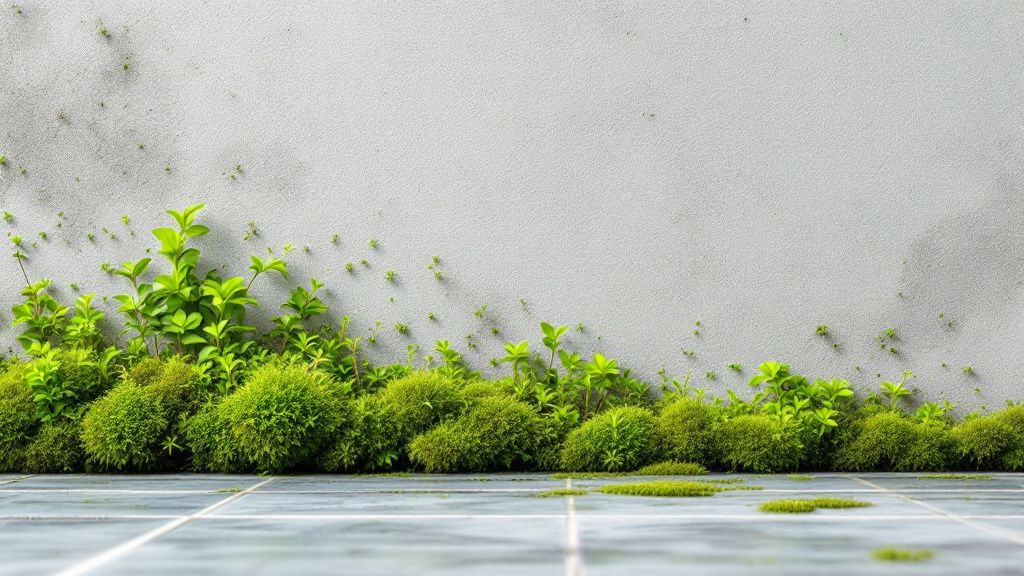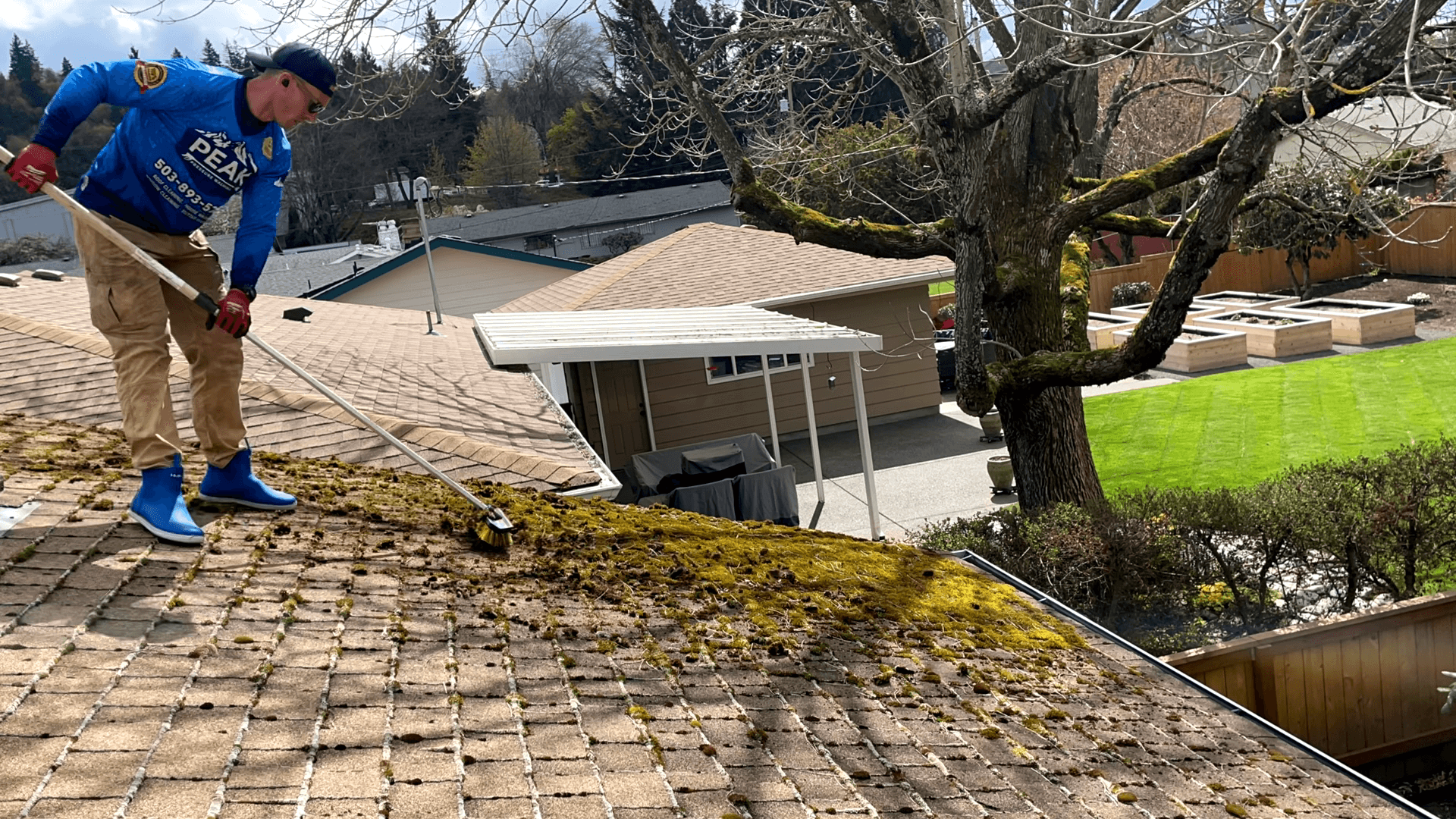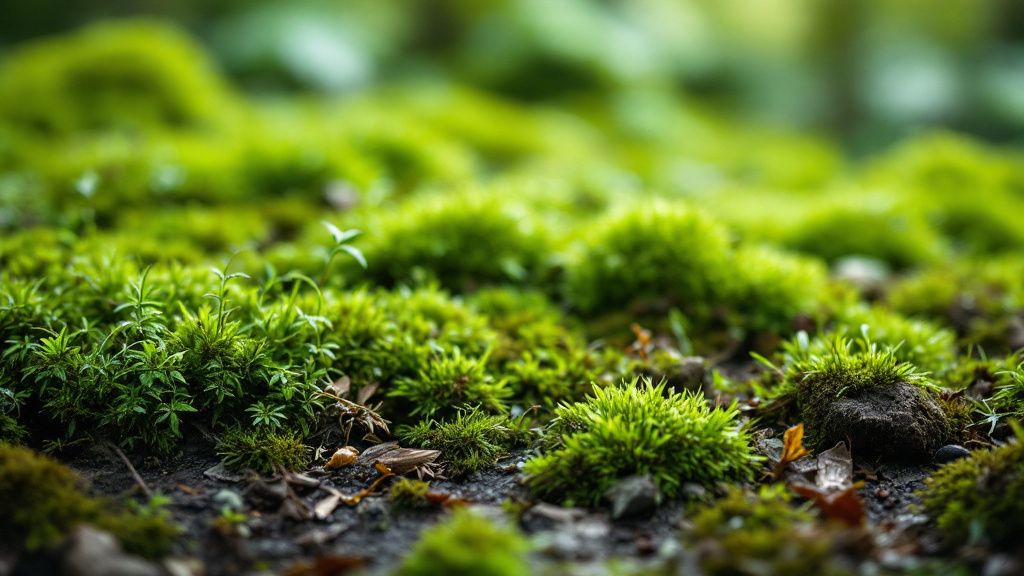Moss in your home not only disrupts aesthetics but can lead to structural concerns. Keeping it at bay begins with understanding its preferences for moisture and shade. To prevent moss from appearing, ensure your living space is dry and well-ventilated. Regularly inspect areas prone to dampness, such as bathrooms, basements, and attics, and address any leaks swiftly. Employ dehumidifiers in humid zones to maintain a balanced atmosphere. Use mold-resistant paints and ensure ample sunlight reaches indoor areas. If moss finds a foothold, seek moss cleaning solutions or explore how to clean moss effectively. Consistent vigilance in maintaining a dry environment is key to thwarting moss issues.
Understanding the Causes of Moss Growth Indoors
Moss growth indoors is often a result of specific environmental conditions that favor its development. High humidity levels and insufficient ventilation provide an ideal setting for moss to thrive. Bathrooms, kitchens, and basements are common areas where moss in the house may occur due to these factors. Proper airflow and moisture control are essential to discourage its growth.
Another key factor that contributes to moss indoors is a combination of dampness and shade. Shaded corners or areas that receive little sunlight can create a conducive environment for moss. Regularly checking these spaces and addressing any leaks or sources of moisture can mitigate the risk of infestation significantly.
Behind the scenes, what most people don’t realize about indoor moss growth is how subtle shifts in humidity can make all the difference. Even small, unnoticed leaks or condensation build-ups can trigger growth, requiring moss removal efforts. Staying vigilant and conducting routine inspections can make a big impact on prevention.
Understanding the causes means knowing how to clean moss efficiently and explore pressure washing moss if necessary. Moss cleaning services can also provide expert advice on how to prevent moss. Armed with this knowledge, you can take proactive steps to keep your living space pristine and moss-free.
Effects of Moss on Your Home Environment
Moss growing indoors can cause a variety of problems, affecting both the home structure and your health. It adds moisture to the environment, creating ideal conditions for mold growth, which can exacerbate respiratory conditions like asthma. Moss can be particularly problematic in areas such as basements and bathrooms, where moisture levels are typically higher, leading to structural issues over time.
Moss presence can also indicate underlying issues such as leaks or poor ventilation, which need immediate attention. It traps moisture, potentially damaging paint and wallpaper, and can cause insulation to degrade. Understanding how to clean moss and employing effective moss cleaning solutions can prevent costly repairs.
Seeking professional help, like moss cleaning services, or utilizing methods such as pressure washing moss, can be effective in managing moss growth and maintaining the integrity of your home. It’s essential to evaluate your environment regularly and explore the best ways to get rid of moss to ensure a healthy living space. Regular maintenance and preventative measures remain key to keeping your home safe and sound.
Early Signs of Moss Infestation
Recognizing the early signs of moss infestation is crucial in safeguarding your home environment. One of the first indications is a damp, earthy smell that lingers, particularly in lower air circulation areas. Visual cues like small patches of green appearing in moist, shaded spots are common indicators. Regular inspections of areas such as windowsills and basements can help you identify these signs early on.
Another early sign of moss infestation might be an increase in unexplained humidity within your living spaces. This can often accompany condensation on windows and walls, creating an ideal setting for moss to thrive. Monitoring these conditions closely can aid in early detection and moss removal before the problem escalates.
In the next few years, with increasing awareness of indoor air quality, monitoring technology is likely to advance, allowing for earlier identification of moss and moisture issues. This will empower homeowners to utilize moss cleaning solutions proactively and engage moss cleaning services as needed.
Practicing vigilance by seeking out conditions that encourage moss growth will serve you well in maintaining a moss-free environment. Learning how to clean moss effectively and knowing the best ways to get rid of moss when it begins to emerge will protect your home from extensive damage. Investing time in preventive measures can lead to long-term peace of mind.
Effective Moss Prevention Strategies
Preventing moss from taking hold in your living environment hinges on implementing effective strategies to manage moisture and airflow. To start, ensure all spaces are well-ventilated by using fans or opening windows regularly to reduce humidity. This is particularly important in bathrooms and kitchens where dampness tends to accumulate, creating a breeding ground for moss.
Routine inspection and maintenance are also crucial in preventing moss growth. Check for leaks in roofs, plumbing, and around windows, and address them promptly. To make the most of these tasks, try incorporating them into a regular home maintenance schedule. This proactive approach can help you catch potential issues before they turn into major problems.
Effective landscaping outside your home can further deter moss from spreading indoors. Trim trees and bushes regularly to allow for sunlight penetration, helping to dry out surfaces that may otherwise harbor moisture. Additionally, ensuring proper drainage around your home’s foundation can prevent water accumulation and leaks indoors.
To extend preventive measures inside your home, consider using moss-resistant paints and sealants in areas prone to moisture. Employing these coatings can discourage moss from adhering to surfaces and multiplying. Pairing these solutions with regular cleaning using moss cleaning solutions will help maintain a moss-free environment, so you can avoid the need for extensive moss removal efforts.
Natural Remedies to Prevent Moss
Natural remedies can be surprisingly effective in preventing moss growth, reducing the need for harsh chemical solutions. One approachable method is using a homemade vinegar solution. Mix equal parts of vinegar and water and spray it in areas where moss tends to form. Vinegar’s acidity disrupts the moss’s growth cycle, serving as a simple yet powerful moss removal technique.
Another natural approach involves using baking soda, which can alter the pH levels on surfaces, making them less hospitable to moss. Sprinkle baking soda generously in areas with visible moss presence or potential growth sites, and leave it for a few days before rinsing. Baking soda is a safe option for your indoor environment, preventing unwanted moss in the house.
To truly understand the value of natural remedies for moss prevention, you need to shift your mindset from relying solely on synthetic products to embracing sustainable, eco-friendly solutions. This mindset shift not only protects your home but also contributes to a healthier environment.
Adopting essential oil mixtures like tea tree oil diluted with water offers antimicrobial properties that deter moss growth. Apply this mixture in problem areas for added protection. By embracing these natural remedies along with traditional methods like pressure washing moss, you create a comprehensive strategy for managing moss issues without resorting to conventional moss cleaning services prematurely.
Choosing Moss-Resistant Plants
Choosing moss-resistant plants can be an effective strategy in keeping moss at bay, particularly in shaded or damp areas of your garden. Opting for plants like ferns, hostas, or ornamental grasses can fill in spaces where moss would otherwise thrive, allowing for a vibrant garden while discouraging unwanted moss growth. These plants offer dense coverage and resilience to moisture, serving as natural deterrents.
The current state of the gardening world shows an increasing trend towards selecting plant species that can naturally manage or reduce moss proliferation. With climate patterns leading to wetter environments, more gardeners are considering moss-resistant varieties to complement their landscapes. Understanding this trend can help you make informed decisions for your garden, promoting a healthier outdoor environment.
These moss-resistant plants can be strategically placed to intercept sunlight, reducing moss-prone areas in and around your home. This not only assists in reducing the need for moss removal but also enhances the aesthetic of your property. Combined with effective indoor measures like moss cleaning solutions and learning how to prevent moss, choosing the right plants forms part of a holistic approach in managing and preventing moss both indoors and out.






